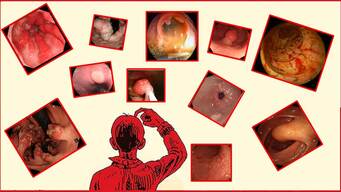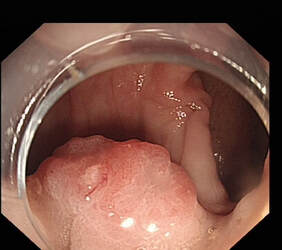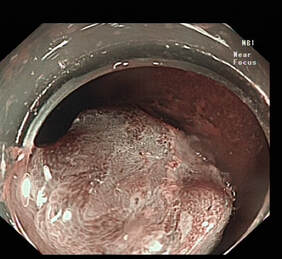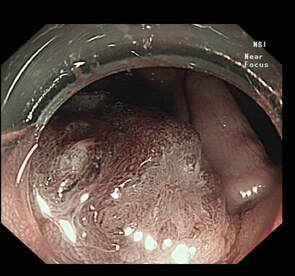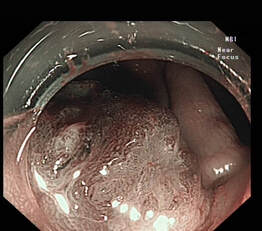|
Posted by Dr Pradeep Mundre This small 15 mm sigmoid polyp was referred for Endoscopic resection. Patient was fit and well with no comorbidities. What do you think of the surface pattern? Would you offer Endoscopic resection or surgery for this lesion ? What is the predicted histology? The question is how reliably can you trust the surface pattern? And how much importance do you give to this in actual decision making. I classified this as JNET 3 verging on 2B , but as the other factors and dynamic assessment and lifting were favourable , went ahead with ESD for this lesion. What was the eventual histology?
The lesion was resected Enbloc with ESD - suboptimal lift - specimen size 25 mm x 25 mm. The histology was one of Pt1B Sm invasive adenocarcinoma, moderately differentiated, with depth of invasion at 2.9 mm beyond muscularis mucosa (Deep sm invasion ) with Lymphovascular invasion. Clear deep margin by 0.9 mm , clear lateral margins. He was offered surgery after this due to LVI Often experts consider other factors such as
In conclusion , although its fair to use surface pattern assessment to differentiate malignant and non malignant polyps, but a decision on endoscopic resectability should be based on various factors than just based on JNET Classification.
Post by Dr Pradeep Mundre
|
Categories
All
|
